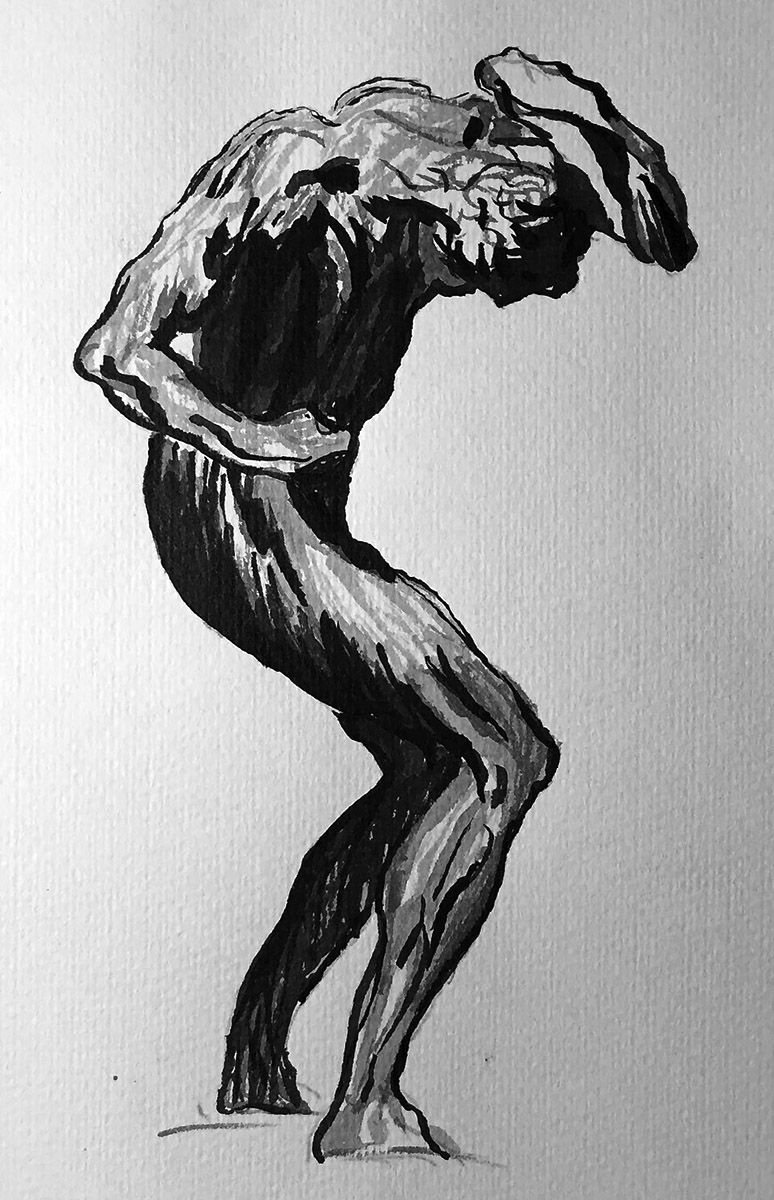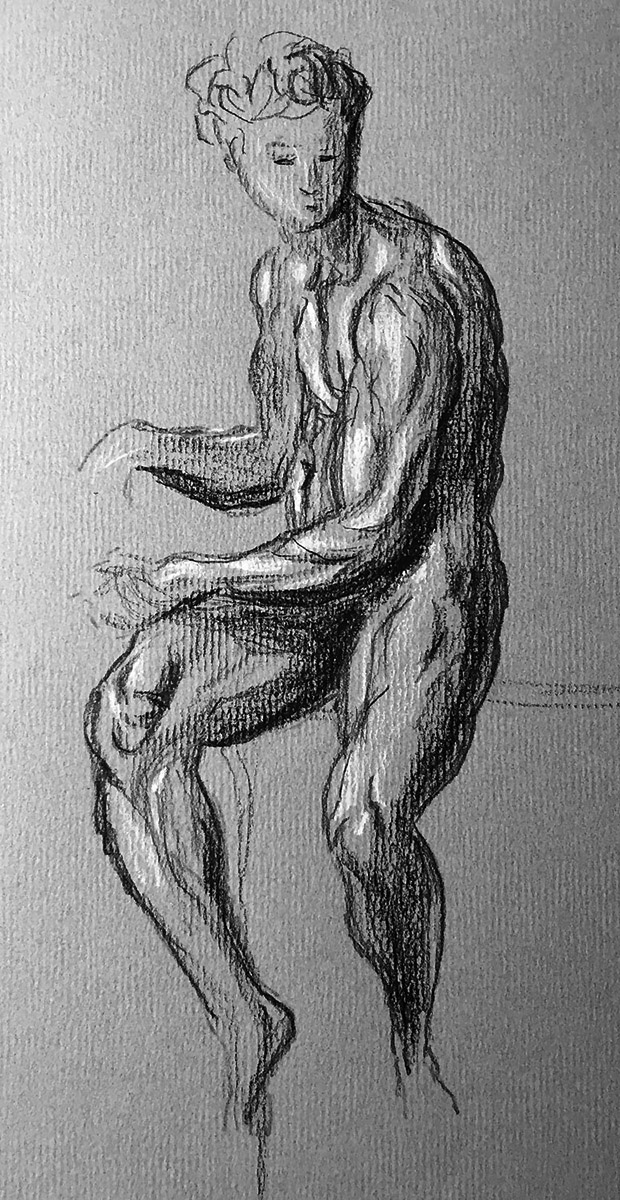
The above is another copy of a Tintoretto drawing located in the Museum of Budapest and is titled “Two Studies after the so-called “Atlas” Statuette.” In the description section under the drawing, it states “This record is subject to revision due to ongoing research.” So what does that mean? As I’ve mentioned in a couple of other blog posts, sometimes a work of art is found to be by another lesser-known artist. It can create quite a brouhaha. So the original drawing might have been done by one of Tintoretto’s students or assistants. Or perhaps a follower of Tintoretto or maybe even ‘gasp’ a forger with a desceptive motive. Wow, things are really heating up, aren’t they? Who knows maybe by the time you read this we might find out what the museum staff discovered. Until then we will talk about the subject of the drawing.
The following information about the myth of Atlas was borrowed or taken from classicalwisdom.com
The story of Atlas may have been founded on a Pelasgian myth, a tale associated with the original residents of Greece. Atlas was extremely powerful and had a brother named Prometheus. I wrote about Prometheus in a previous post, I hope you were paying attention. Atlas was one of Zeus’ greatest rivals and Zeus was kind of a big deal. Zeus along with the rest of the Olympians greatly feared Titan and his fellow Titans. In the end, the Olympians prevailed and conquered the Titans. The other Titans were incarcerated by Zeus in Tartarus, which is the name for hell. Since the Olympians feared and hated Atlas, they devised a special punishment for him. Atlas was sentenced to stand at the western end of the earth. He was then forced to carry the sky on his shoulders forever. According to my research, forever is a very long time. Atlas suffered a great deal because he had to bear such a hefty load. Over the centuries, a misconception emerged that he was destined to hold up the entire world. This is probably a result of artworks created during the Renaissance that misinterpreted the original myths. The Greeks believed Atlas held up the sky over what is now the country of Morocco.

